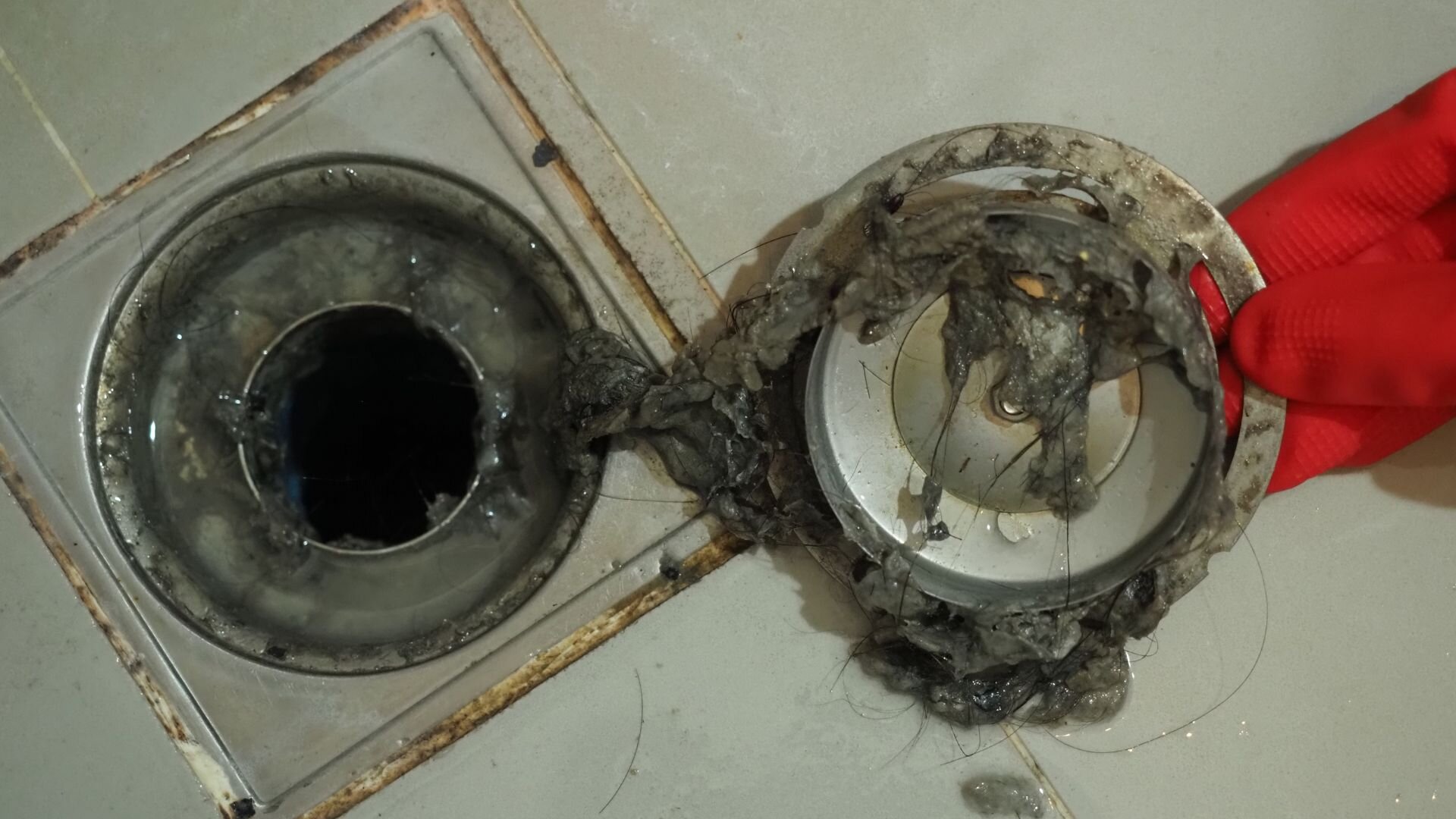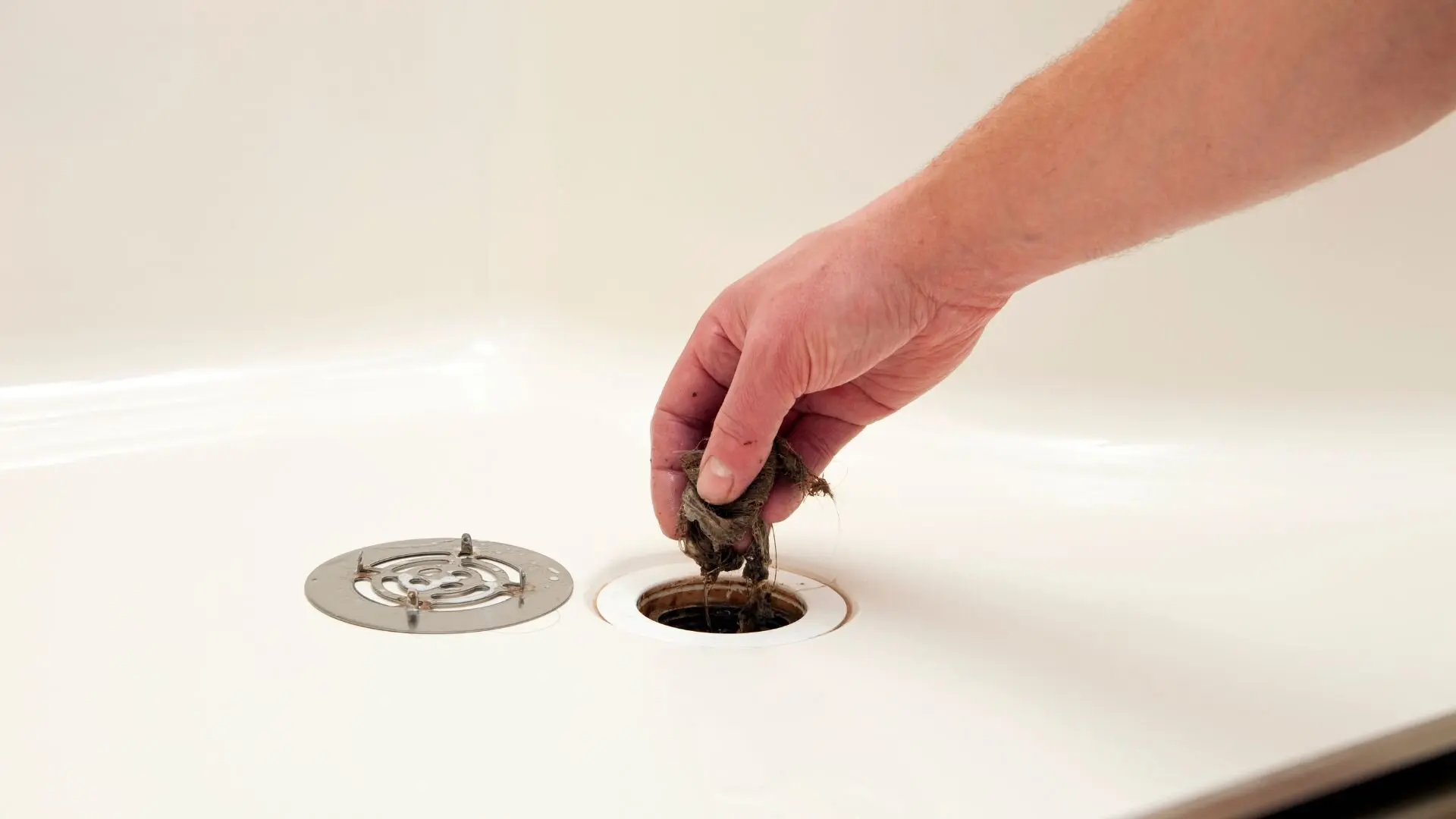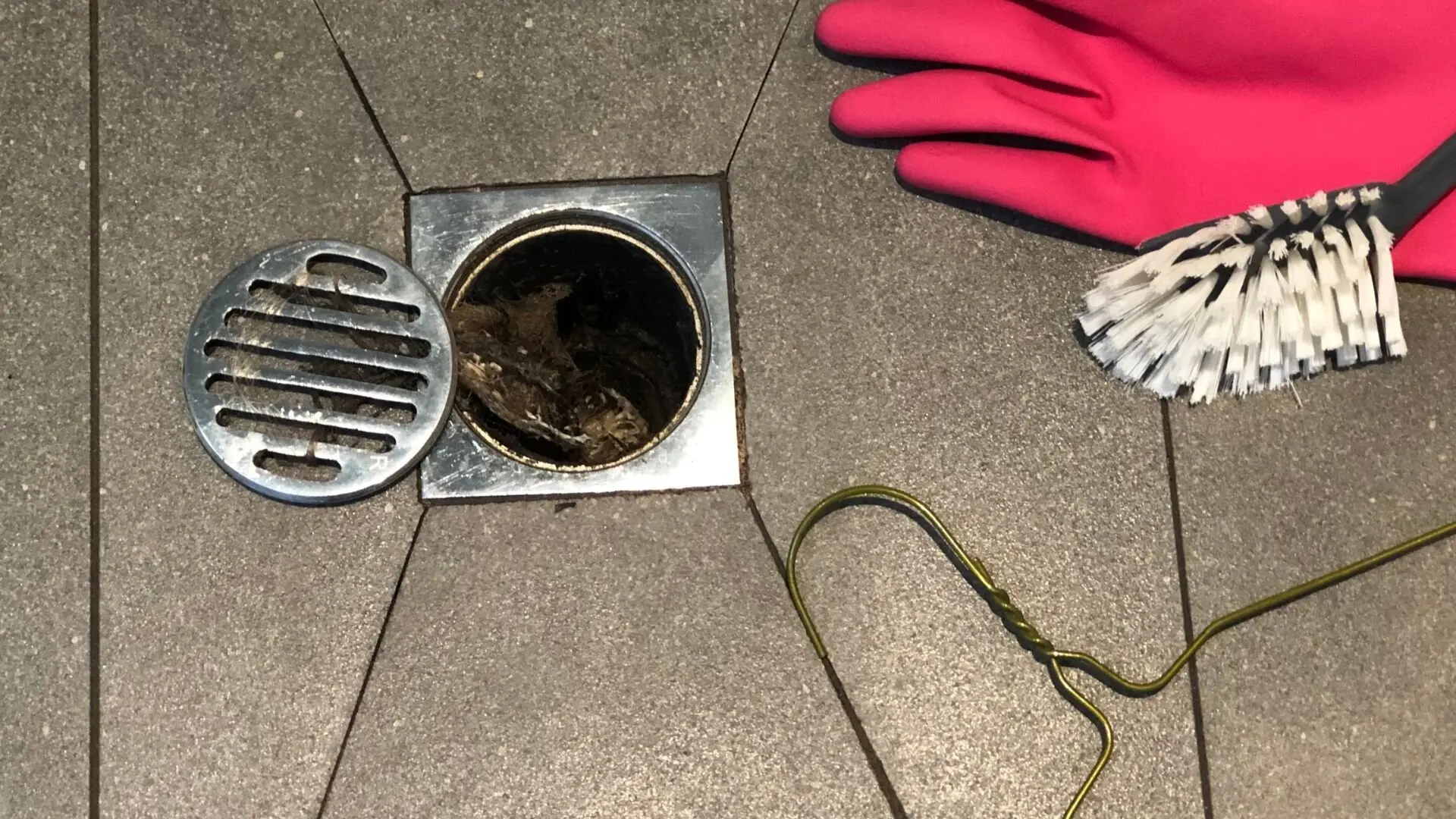Picture this: you’re stepping into the shower, ready for a relaxing rinse, only to find yourself ankle-deep in water moments later. It’s a telltale sign—the dreaded hair-clogged drain strikes again, turning your peaceful retreat into a frustrating puddle.
Hair blockages in shower drains are a common household headache that can disrupt your daily routine and potentially lead to more serious plumbing problems if left unresolved. But fear not!

Clearing your shower drain of hair build-up doesn’t have to be a call to the plumber every time. In this blog, we’ll guide you through several effective methods to remove hair from your blocked shower drain, from simple DIY tricks to preventative strategies that can help keep those pipes clear in the long run.
Whether you’re a long-haired beauty, a pet owner with a shedding furry friend or simply looking to maintain a pristine bathroom, this post is your one-stop-shop for banishing hair clogs for good. So grab your gloves, and let’s dive into the world of drain maintenance!
Identifying the Blockage
Before you set out to tackle the problem of a blocked shower and bathtub drain, it’s crucial to confirm that hair is indeed the culprit. Identifying the blockage begins with recognising the signs of a clogged drain.
Typically, water will drain more slowly than usual, and you may notice a pool forming around your feet during a shower.
Sometimes, you might even see hair strands peeking out from the drain’s cover. If the blockage is severe, you may hear gurgling sounds as water struggles to pass through the pipes.
In some cases, an unpleasant odour can arise from decomposing all the hair and other organic matter trapped within the bathroom sink drain. Once you’ve pinpointed hair as the source of your blockage, you can proceed with the appropriate removal method, ensuring your shower drain returns to optimal functionality.
Initial Preparation
Initial preparation is key to effectively removing hair from a blocked shower drain. Equip yourself with a pair of sturdy gloves to protect your hands from grime and potential irritants.
Make sure the bathroom is well-ventilated, especially if you plan to use any chemical solutions.
Assemble the tools you might need, which could include a plunger, vinegar and baking soda, a plumber’s snake, or a wire hanger that has been straightened. Keep a bucket of hot water nearby to flush the drain after clearing the clog.
Additionally, clear any personal items from around the shower to prevent them from getting wet or damaged and to allow yourself ample space to work. With these steps, you can tackle the clog efficiently and restore the flow to your shower drain.
How to Remove Hair From a Shower Drain
Clearing a hair-clogged drain is straightforward with the right approach. Several tried-and-true methods can save you time and money. Whether you like hands-on techniques or need basic household tools, these strategies can get your water flowing smoothly again. Let’s explore each method to find the best solution for your situation.

Manual Removal
The most straightforward way to tackle a hair blockage is through manual removal. Take off the drain cover—which might need unscrewing or prying, depending on its design—then inspect the drain and pull out the hair.
A pair of tweezers or needle-nose pliers can be beneficial if the hair from the drain is just beyond the reach of your fingers. This method is most effective when done regularly to prevent a small clog from becoming a big problem.
Chemical Solutions
If manual methods don’t work, chemical solutions can help dissolve hair in the drain. Liquid drain cleaners are designed for this, but use them cautiously as they can be quite harsh.
Alternatively, a gentler option is to use a mixture of baking soda and vinegar. Pour a cup of baking soda down the drain, followed by an equal amount of vinegar, and let the mixture work for an hour before flushing with hot water. This can help dissolve the hair clog and other organic matter without the risk of pipe damage.
Plunging Technique
Sometimes, a plunger can come to the rescue, even for hair clogs. To use a plunger effectively, cover the overflow drain, if there is one, to ensure good suction. Place the plunger over the drain and use forceful, consistent plunges to create pressure to dislodge the clog. After several plunges, check if the water drains more freely. It may take a few tries to get the desired result.
Plumbing Snake
A plumbing snake is suitable for stubborn clogs that reside deeper within the pipes. Feed the snake into the drain until you feel resistance, which likely indicates the location of the clog. Crank the handle of the drain snake to dislodge the hair, then slowly pull it out, bringing the hair with it. This method can reach clogs beyond the grasp of manual removal and can be particularly effective without using chemicals.
Preventative Measures

Prevention is key to keeping your shower drain clear. Start by installing a hair catcher or mesh screen over the drain to trap hair before it enters the pipes.
Make it a habit to clean these traps regularly to prevent build-up. Regularly brushing your hair before showering can also significantly reduce the amount of hair in the drain.
If you have pets, especially those that shed a lot, try to brush them outside to keep their hair from getting into the drainage system.
Additionally, giving your drain a monthly flush with boiling water can help dissolve oils, soap scum, and any hair. Incorporating these simple habits into your routine can minimise blockages and keep your drain flowing smoothly.
When to Call a Professional
Knowing when to call a professional is as important as attempting to clear a blockage on your own. If you’ve tried manual removal, chemical solutions, plunging, and snaking without success, it’s time to seek expert assistance.
Persistent clogs that resist all efforts can indicate deeper complex issues within your plumbing system, which DIY methods cannot resolve. Additionally, professional intervention is crucial if you notice water backing up in other drains or if there are signs of water damage, such as leaks appearing on ceilings or walls.
A licensed plumber has the tools, expertise, and experience to diagnose and effectively solve the problem, ensuring your plumbing is in good working order and preventing potential damage to your home. Remember, timely intervention by a professional can save you from costly repairs down the line.
Say Goodbye to Clogs
While a blocked shower drain can be a nuisance, it’s often a problem that can be resolved with a little know-how and elbow grease. From manual removal to the careful use of chemical agents and the plunging technique to the trusty plumbing snake, you can employ various methods to tackle the hairy situation in your shower drain. However, prevention is always better than cure, so remember to take proactive steps to keep your drains clear.
But when the blockage is stubborn, or you suspect a deeper issue, that’s when it’s time to call in the cavalry. Big Blue Plumbing is here to help! Our experienced professionals can handle even the most rebellious clogs, ensuring your plumbing remains in top condition. Don’t let a blocked drain dampen your day— contact Big Blue Plumbing for swift, effective solutions to keep the water flowing as it should. Whether you need immediate assistance or routine maintenance to prevent future blockages, we’re just a call or a click away.
Removing Hair From Your Shower FAQs
What is the simplest way to remove hair from a shower drain?
The simplest method is manual removal. Wear gloves, carefully remove the drain cover, and use your fingers or a pair of tweezers to pull out the accumulated hair. For best results, do this regularly to prevent severe blockages.
Can I use chemical drain cleaners for hair clogs?
Yes, chemical drain cleaners can dissolve hair clogs, but they should be used as a last resort due to their potential to damage pipes and harm the environment. Always follow the manufacturer’s instructions and use them sparingly.
Are there natural alternatives to chemical drain cleaners?
Absolutely! A popular natural method involves pouring baking soda followed by vinegar down the drain, waiting for the fizzing reaction to subside, and then flushing with boiling water. This can help break down and clear minor hair clogs.
How does a plumbing snake work for hair clogs?
A plumbing snake, also known as a drain auger, is a flexible tool designed to reach and remove clogs. You insert it into the drain, where it can hook onto hair, enabling you to pull it out or break it up enough for proper flushing through the pipes.
How often should I clean my shower drain to prevent hair blockages?
It’s good practice to clean your shower drain of hair at least once a month to prevent build-up. You should do it more frequently if you have heavy shedding or multiple users.



